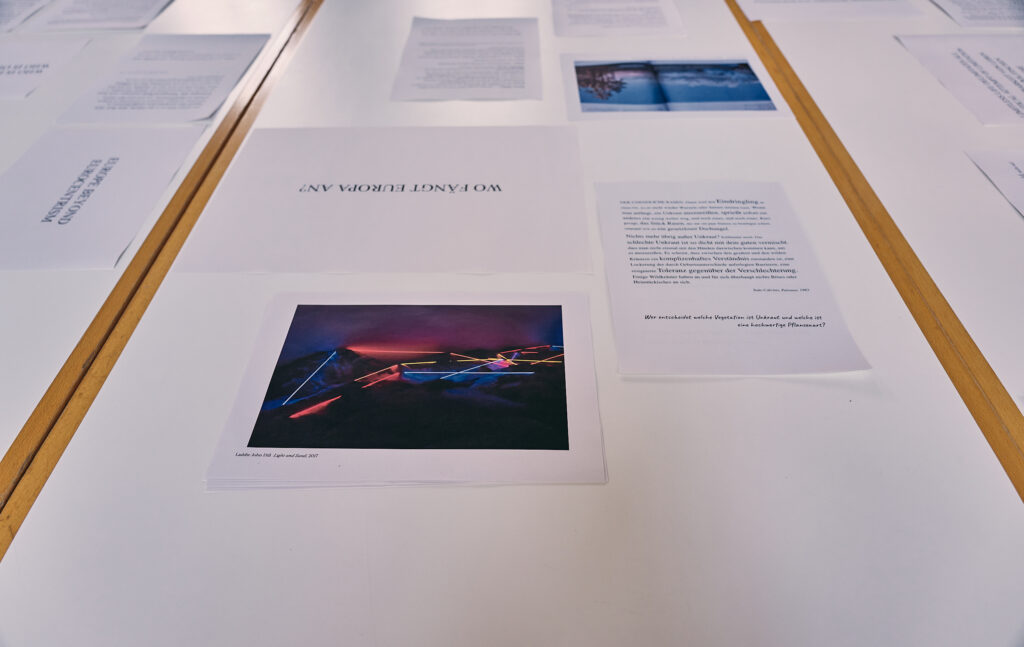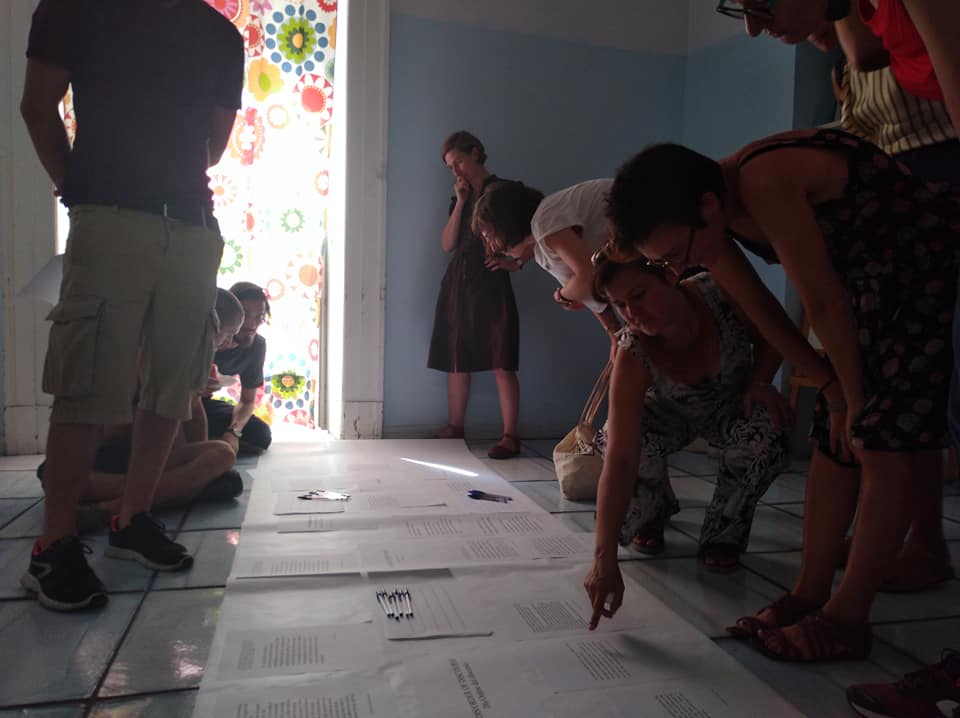On the Table of Matters (ToM) collections of materials are displayed on a shared working table, where they can be appropriated and rewritten by the participants in a collaborative exchange.
The ToM facilitates collaborative procedures that defy the traditional conception of ownership in knowledge and art production and consider heuristic and poetic creation as a shared process.
© Science of Singularities. The table of matters
Experimenting different kinds of collaborative actions and artistic operations, the opportunity is given to observe how constellations of meaning emerge from the materials, through collective interaction, regardless of an individual will. Due to the encounter with the “singular”, “other”, “irreducibly foreign”, “illegible” character of “matters”, the rewriting process deviates from predictable paths.
Through the collective interaction the matters are situated in a new discursive horizon and pre-existing (linear, hierarchical, subject centered, narrative) orderings principles and structure of meaning are finally altered and subverted.
The name of this methodology plays with the plurivocity of the English word matter, which can indicate a material (lat: materia) , an “empirical element to be transformed”, but also the “theme” or the main question of a discussion. Selected visuals and text excerpts on the table represent the material of a thinking still to be formulated, while the work on the table constitutes an attempt to pronounce the questions that should be addressed by the collective body of participants around the table. Matters that matter.

© Giovanni Ambrosio.The table of matters in Entangled Matter, Fulda 2023
The Tables of Matters (TOM) are collections of quotes and visuals
printed in A4 format displayed on a shared working table. Participants are invited to appropriate and rewrite the shared materials applying “rewriting operations” that are drawn from artistic creation processes. The collections of quotes and visuals, presented on the Table of matters are chosen from a growing archive that reflects a plurality of positions. Authors from different backgrounds will be invited to contribute to these collections by sharing materials from their personal bookshelves and extend the collections step-by-step.
The Table of Matters (TOM) triggers imagination
It focuses on the critical and imaginative force freed through the relationship with alterity. The “foreign” character of the excerpts forces participants to rethink their positions starting from an “other”, radical perspective. Confronting the singularity of specific languages, for instance, philosophy or poetry, responding to their obscure and sometimes unintelligible character, participants are invited to move away from common concepts and narratives, to conduct their thoughts through unforeseen paths and to prefigure future scenarios.
The Table of Matters (TOM) is a hypothetical work desk
of a writer, philosopher or literary author, for whom these materials or sources are working tools. She or he has to cut and paste and rearrange the material for supporting her or his argument and composing a text of her or his own. Whether this is done with software or with scissors, the clippings direct and inspire thinking and feed into a new text by the simple task of arranging, rearranging, commenting on and finally rewriting them. The very question that moves the thinking arises in the white spaces linking two sentences, extracted from different works and contexts.

© Giovanni Ambrosio.The table of matters at Clea Brussels
The Tables of Matters (TOM) are provisional arrangements
that reveal multiple provocative angles on the topics discussed in the materials. They are also marked with comments that bring the texts in relation to daily life problems. These interventions shed light on new interpretations of questions of identity, origin, communication, or sustainability. However, the ordering principles and classification criteria remain provisional and can yet be put into question and the texts on the tables be rearranged.
It is up to the collaborative interventions to put the ordering principles of these collections into question and re-situate them, in order to become aware of the rationale that places them in a given place in time and space and let alternative ordering principles arise.
The Table of Matters (TOM) is transformative
It aims at transforming the sources into new expressions of thought valid in the horizon of the personal experiences of the participants and crucial to current political and social challenges.
The sources displayed add new voices to our reflections and can inspire our thinking. They are selected from the near and the distant past, from theoretical and literary sources, some are academic (from well-known personalities), some are from the margins of institutional thought productions (for instance from a shaman or a poet) some are blatant, some seem unintelligible and strange.
The sources are organized in constellations that while allowing for multiple reading paths, illuminate a critical position towards norms and habitual thought patterns. They question parameters of our political presence such as society, identity, and origin and parameters of scientific work such as the division between rational thought and artistic practice.
The arrangement of the sources aims at nourishing our imagination by widening the angle of our perception – or quoting the writer Italo Calvino – the breadth of our gaze.

© Science of Singularities. The table of matters, Naples